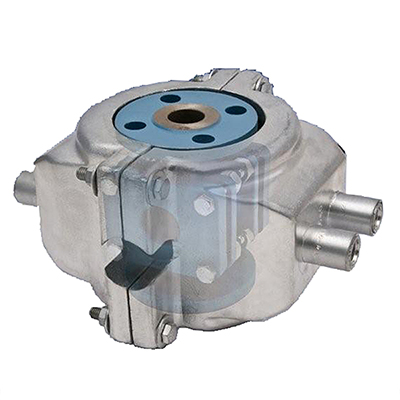- Home
- Products
- Sight Flow Indicators
- Industrial Sight Flow Indicators
-
Heating Jackets Accessories

Heating Jackets Accessories
Heating Jackets for Visual Flow Indicators
A new heating jacket from L.J. Star allows direct observation of high-temperature or temperature-sensitive process fluids without creating a cold spot on temperature-controlled process piping.
Request a Quote
Request a QuoteA new heating jacket from L.J. Star allows direct observation of high-temperature or temperature-sensitive process fluids without creating a cold spot on temperature-controlled process piping. The new jacket fits directly on and around a standard L.J. Star view-thru visual flow indicator, exposing only the small area of the indicator’s viewing port to ambient temperature.
These jackets are composed of hollow “clamshell” halves consisting of a carbon or stainless steel pressure chamber within an aluminum casting. The inner faces of the pressure chamber are precisely molded to maintain contact with the specific visual flow indicator in use. They bolt securely into place, completely covering the visual flow indicator. Designed and tested in accordance with the ASME Boiler and Pressure Vessel Code, Sec. VIII, Div. 1 standards, the jackets are capable of maintaining operating temperatures up to 750?F. For lower temperatures hot water can be used as the heating fluid.
In operation at startup, steam or heating fluid at a specified temperature enters the jacket from the pipeline heat supply, preheating the walls of the visual flow indicator. The jacket expands more rapidly than the body of the flow indicator but thermal contact is maintained by non-drying heat transfer cement that covers the jacket. Then, when the pipeline, including the flow indicator, reaches the desired temperature, process fluid can be safely introduced and visually monitored as necessary.
The visual flow indicators are available in flanged or threaded versions in 316 stainless steel or carbon steel as standard, with Monel®, Hastelloy® or Alloy 20 as options. Windows are tempered borosilicate glass, with METAGLAS® fused sight glasses as an option for more demanding applications. Pipe sizes range from ½-inch to 8 inches in either 150 psi or 300 psi versions. For handling particularly corrosive process fluid, a Teflon® lined version is also available.